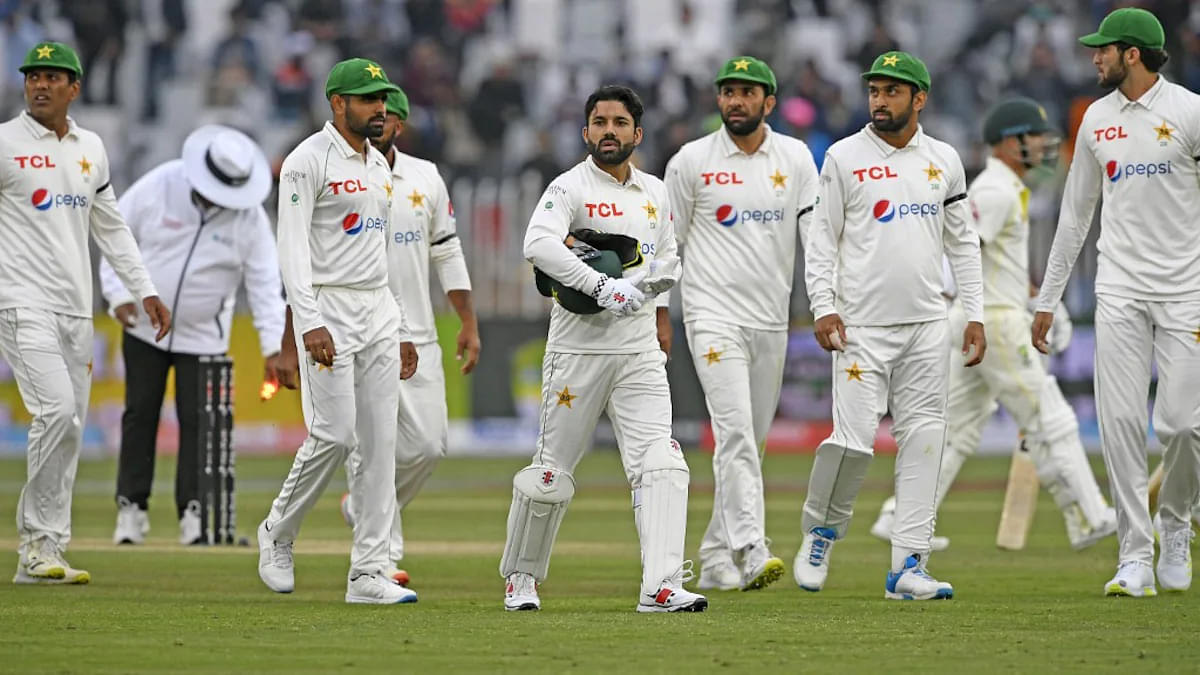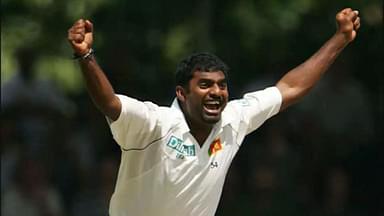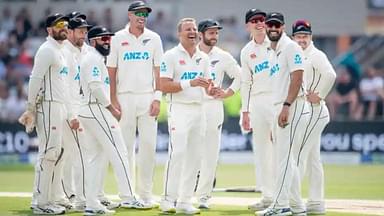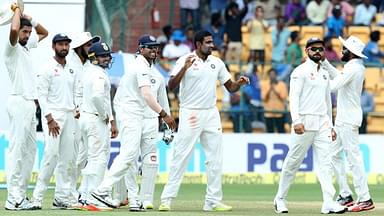Stumps meaning in Cricket: The umpire at the bowling end pronounces ‘Stumps’ at the end of each day during a Test match.
Advertisement
Arch-rivals India and Pakistan have gained a massive upper hand in their respective home Test series matches after umpires call ‘Stumps’ at the end of Day 2 at Mohali and Rawalpindi respectively.
Both India and Pakistan, courtesy of a huge first innings total, have forced Sri Lanka and Australia respectively to play the catch-up game while operating with a spin-heavy attack each.
India, on the back of Ravindra Jadeja’s second Test century (175* off 228) and a scintillating knock from Rishabh Pant (96 off 97) declared their innings at 574-8, while also sending back four of the Sri Lankan batters back in the pavilion with mere 108 runs on the scoreboard.
On the other hand, Pakistan, playing against Australia at home after 24 years, made sure they made the Aussie bowlers’ life miserable after they too declared their first innings at 476-4, with the assistance of a couple of stellar centuries from Imam-ul-Haq (157 off 358) and Azhar Ali (185 off 361).
Stumps meaning in Cricket
Umpires were forced to call stumps on Day 2, after bad light forced the players to tread off the field with only one Over of the Australian innings possible.
⚠️ Bad light stops play.
Three solid partnerships helped boost Pakistan’s total to 476.
Day two ends with a declaration and a batting cameo by Australia. #BoysReadyHain l #PAKvAUS pic.twitter.com/AeA7XCYRKc— Pakistan Cricket (@TheRealPCB) March 5, 2022
The word ‘Stumps’ was originally used by the umpires after the end of a day’s play in Test Cricket because they would then draw the stumps (the two sets of wickets) out after the final delivery of the day is bowled.
However, in modern day Cricket, the umpires, post calling ‘Stumps’, remove the bails from the top of the stumps at each end (batting and bowling) to mark the end of day’s play.
As per Law 12.2 of the MCC Laws of Cricket under the head ‘Start of play; cessation of play’, ‘the bowler’s end umpire shall call Time, when the ball is dead, at the end of any session of play or as required by the Laws’.
It is the third session (and the final one) after the end of which, the umpire finally calls ‘stumps’ to mark the end of that particular day’s play.






